|
Wedgbury
Antiques English Porcelain
Dealers And Collectors Of Antique Porcelain |
|
|
|
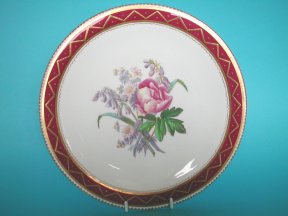
|
A
Copeland Dessert Plate
c.1876. |
A
nice quality dessert plate made by W.T.Copeland.
Skillfully painted to the centre with a floral subject. Printed factory mark and
impressed date code for October 1876 to the back. The
plate measures 23cm. diameter. |
Condition
Good, no damage. There is a little
wear to the gilding only.
|
|
|
|
|
|
|
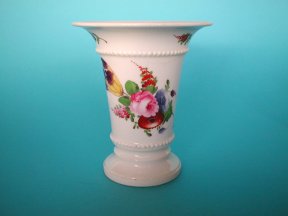
|
Early
19th. Century Vase. |
An
early 19th. Century spill vase16cm. high. Well painted
with colourful flowers. Probably made in Staffordshire c.1820.
Unmarked.
|
Condition
Very good, some crazing to the
glaze. |
|
|
|
|
|
|
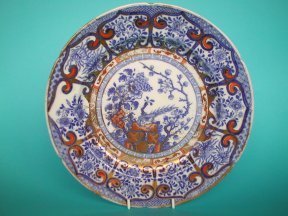
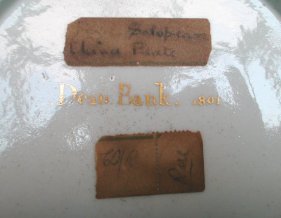
|
An
Interesting English Porcelain Plate. Dated 1801. |
| An
early 19th Century plate, probably Coalport. Printed in
underglaze blue with an Oriental inspired pattern,
overdecorated with iron red and extensive gilding. The
back of the plate inscribed in gilt 'Dean Bank 1801' also with
an old collectors label which reads 'Salopian china plate' The
six indent shape, the potting and the body certainly appear to
be early Coalport, but I don't recognize the print.
Interestingly a modern Ordinance Survey map of The Coalport /
Caughley area shows an area called 'The Dean' about a half mile
from where the Caughley China works once stood (John Rose of
Coalport was operating the Caughley works from 1799 to
c.1814). Whether 'Dean Bank' refers to this area or
not, I'm not sure, more research is needed. The
plate measures 24.5cm.
If anyone has
any information or ideas regarding this plate. I would be very
interested to hear.
|
Condition
Good, no chips or cracks, but there is a lot of wear to the
gilding.
|
|
|
|
|
|
|
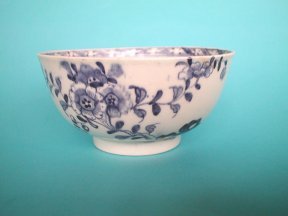
|
Lowestoft
Porcelain Bowl.
c.1765-70. |
A
Lowestoft porcelain bowl. 12.2cm. diameter.
Painted in an inky underglaze blue with flowering plants and
tendrils, issuing from rockwork. A trellis border to the
inside of the rim. Numeral 2?, painted to the inside of
the footrim in underglaze blue. Dating from c.1765-70. |
Condition
The bowl has no cracks or
repairs. There are however, two very small and one
slightly larger chips to the edge of the rim. These may
possibly have been caused by the spurs on which it was fired
in the kiln (Lowestoft pieces were quite often fired upside
down) as they are more or less 120 degrees apart. |
|
|
|
|
|
|
|
© 2000 Wedgbury Antiques. |
|